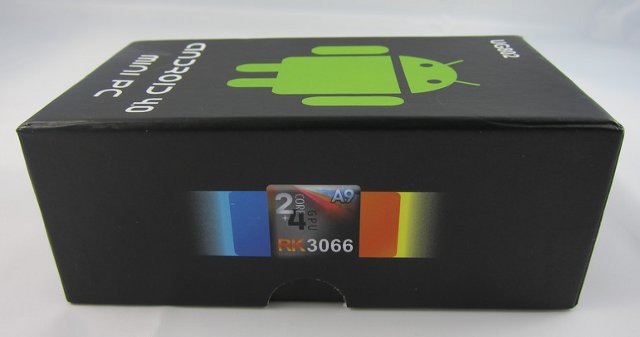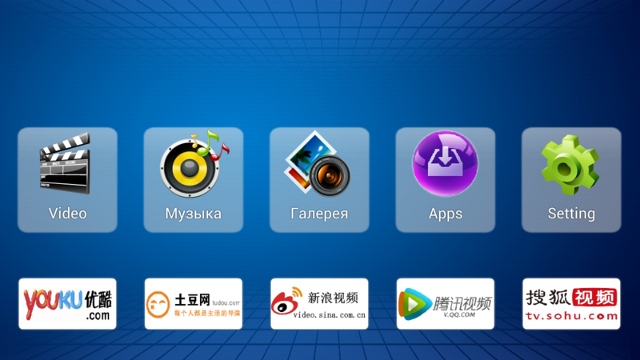Leo, a reader of this blog who seems to be indirectly involved in togetho.ru, has written a review for UG802 dual core mini PC in Russian. He has allowed me to post the review in English, and I wrote condensed review in English which you can read below.
UGoos UG802 is sent in the following package that clearly shows it’s based on Rockchip RK3066 processor.
Now let’s see what’s inside the package.
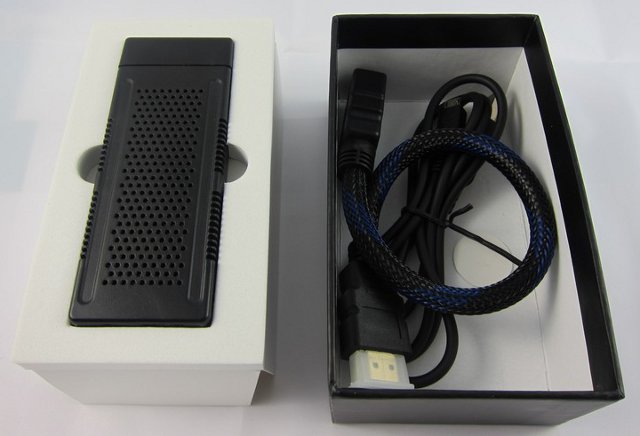
There’s the UG802 TV stick, a female to male HDMI cable (which appears to be too short as usual) and a USB cable to power the device.
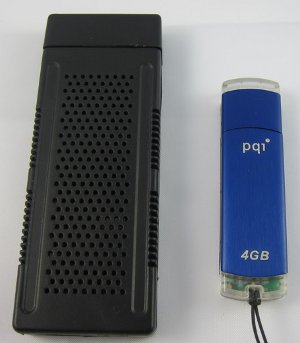 UG802 is not the smallest mini-PC around as you can see from the picture on the right where it is compared to a flash drive, but it weights just 31g, has a lot of ventilation holes, and features an HDMI male connector, a microSD card slot, microUSB and USB ports.
UG802 is not the smallest mini-PC around as you can see from the picture on the right where it is compared to a flash drive, but it weights just 31g, has a lot of ventilation holes, and features an HDMI male connector, a microSD card slot, microUSB and USB ports.
Leo connected a powered USB hub, and could use external HDD-drives, flash-drives, USB keyboard and mouse without issue, except there may be some delay when you type on the keyboard. But for this type of device, keyboard and mouse are not convenient, and recommends devices such as the Mele F10 or iPazzport wireless keyboard/mouse.
Once you’ve connected the device to HDMI and USB, the device shows an animated boot logo (R-BOX) and after a few more seconds you should see the following Android home screen.
So they did not use the standard Android home screen, which IMHO is an advantage for this type of device, as bigger icons are more convenient to use on the TV. The user interface is typical of set-top boxes with a video, music and pictures sections, as well as app and settings sections, and there are 5 famous Chinese services which are available at the bottom of the screen, but might not be useful to most people.
The settings section of the UI is also customized, although you can get the usual Android settings by entering the advanced settings section, where you’ll see the model is called “rt30sdk”.
Leo tried several applications including Skype with a USB webcam, mini (or mobile) Opera, Angry Birds, playing a Youtube video in the web browser and everything seems to be working nice and smooth as you can see in the video below.
During the first day of us, Leo experience quite a few Wi-Fi disconnections, and the only solution was to reboot the mini-PC, but after a few days of use, the problem seemed to have disappeared. Bluetooth is available in the menu, but UG802 does not have built-in Bluetooth, and USB Bluetooth does not work either, but the latter should be fixable in future firmware upgrades.
Several 1080p videos (MP4) on a USB hard drive could be played smoothly. Watch the video below to see the video tested in UG802.
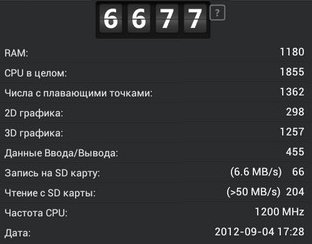 Leo ran several benchmark including Antutu which at 6677, is not as good as Rockchip RK3066 tablets (up to 8000) for the simple reason the CPU frequency is limited to 1.2 GHz vs 1.6 GHz for tablets, most probably to prevent overheating or limit the power required in order to be able to use the TV USB port to power the device without having to use an external power supply. Other benchmarks include CF Bench with a performance (6547) similar to Galaxy S2, Nenamark 2.0 (57.1 fps), Abtutu 3D Ratings (1280×672: 3910 | offscreen: 2949) and Vellamo (1469). As with most mini PCs, Quadrant simply refused to start (Black screen).
Leo ran several benchmark including Antutu which at 6677, is not as good as Rockchip RK3066 tablets (up to 8000) for the simple reason the CPU frequency is limited to 1.2 GHz vs 1.6 GHz for tablets, most probably to prevent overheating or limit the power required in order to be able to use the TV USB port to power the device without having to use an external power supply. Other benchmarks include CF Bench with a performance (6547) similar to Galaxy S2, Nenamark 2.0 (57.1 fps), Abtutu 3D Ratings (1280×672: 3910 | offscreen: 2949) and Vellamo (1469). As with most mini PCs, Quadrant simply refused to start (Black screen).
Finally, UG802 casing was opened to allow a closer look at the PCB.
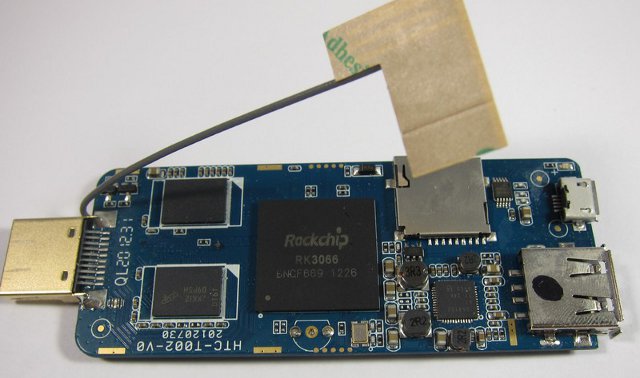
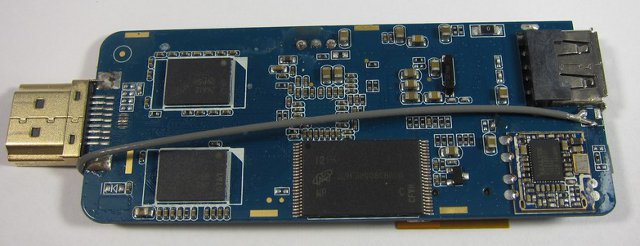
In conclusion, Ugoos UG802 mini PC review was positive, as it is a lightweight and compact system that can be plugged directly into a TV to make it “smart”, it can achieve very good performance compared to existing solutions and does not overheat. However, the firmware is still unstable and there is room for improvement on the software side. You can find more information, and a lot more pictures in the review in Russian.

Jean-Luc started CNX Software in 2010 as a part-time endeavor, before quitting his job as a software engineering manager, and starting to write daily news, and reviews full time later in 2011.
Support CNX Software! Donate via cryptocurrencies, become a Patron on Patreon, or purchase goods on Amazon or Aliexpress


